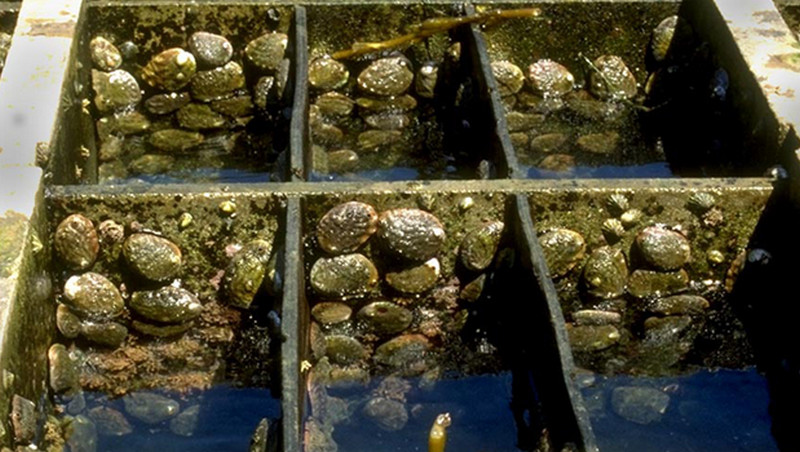When the word “abalone” is mentioned in the Philippines, many people envision a foreign delicacy, often served in high-end restaurants. However, few know that the Philippines is home to three native abalone species: the donkey’s ear abalone (Haliotis asinina), H. varia, and H. ovina. These marine mollusks, known for their unique ear-shaped shells and delectable meat, can generate significant income through sustainable abalone farming. This article explores the potential for making money through abalone farming in the Philippines and how modern techniques have revolutionized this industry.
The Abalone Market
Abalone, commonly called “sea ear,” thrives in shallow waters and primarily feeds on small algae and diatoms. The distinctive respiratory pores along the edge of their shells set abalones apart from other mollusks. This unique characteristic, combined with their firm meat texture and exquisite flavor, makes abalone highly sought after in international cuisine.

Abalone is a delicacy appreciated worldwide, including in Japan, China, Europe, Australia, the USA, and Mexico. In Japan, it frequently stars in dishes like sushi and sashimi, while in Western cuisines, it’s commonly prepared by grilling or deep-frying. The abalone market is extensive and lucrative, making it a promising avenue for entrepreneurs in the Philippines.
Challenges in Abalone Farming
One significant challenge in abalone farming is their slow growth rate. These mollusks require patience and attention to detail, making it difficult for producers to sustain production after the initial harvest. Moreover, their natural food source, algae, is susceptible to depletion due to factors such as fluctuating water currents and pollution, further exacerbating the production challenge.
Modern Solutions in Abalone Farming
Fortunately, technological advancements have paved the way for more efficient abalone farming practices. One revolutionary method involves cultivating and multiplying abalones in tanks and large containers, allowing for greater control and oversight of the entire production process. This innovative approach was developed by the Southeast Asian Fisheries Development Center in Tigbauan, Iloilo.
Seed Production
In this method, captive abalones reach sexual maturity in just 6-8 months when they attain a shell size of 35-40 mm. These abalones are reared in fiberglass or concrete spawning tanks, where sand-filtered seawater continuously flows through. The conditions in these tanks are carefully controlled to create an environment conducive to reproduction.
To differentiate between male and female abalones, one can observe the color of their gonads. Female abalones have dark green gonads, while males have milky-white ones. The gonad is the reproductive organ that releases gametes (eggs or sperm) during mating.
Spawning, the process of releasing gametes, usually takes place between one and three o’clock in the morning. Interestingly, male abalones release their sperm earlier, which triggers spawning in mature females. Just one male abalone is sufficient to fertilize multiple female abalones. A mature female, with a shell length of 50-80 mm, can release anywhere from 100,000 to 1 million eggs during one spawning event. The time gap between two successive spawnings may vary from 13 to 37 days, providing ample opportunities for consistent seed production.
Employing ten spawning tanks with 50-60 breeding abalones makes it possible to maintain a stable supply of eggs and larvae throughout the year. Maximizing seed production involves collecting the fertilized eggs early in the morning, usually between six to seven o’clock. These larvae are then placed in rearing tanks, alongside pre-grown diatoms, to ensure their healthy development.
Nursery Rearing
Around 150,000 to 300,000 larvae can be placed in a one-ton tank filled with sand-filtered seawater for successful nursery rearing. On the fifth day after stocking, these tanks receive mild aeration and are positioned under ambient light. 40-watt fluorescent lamps can be utilized to provide additional lighting at night. Larvae are nurtured in these tanks for up to 60 days until they reach a 5 to 10 mm juvenile size.
The next step in abalone farming is to culture these early juveniles in half-cut PVC pipes. They should be sustained with fresh seaweed for 70-80 days or until they achieve a shell length of 30 mm. To preserve water quality throughout this process, it is crucial to maintain a consistent supply of sand-filtered seawater.
Grow-Out Phase
Abalones cultivated in flow-through tanks or sea cages can reach their marketable size (55-60 mm shell length) within 8-10 months. When using tank culture, ensuring a constant flow of sand-filtered seawater is essential. Abalones can be placed in perforated plastic buckets suspended in the tanks for ease of feeding and maintenance. Fresh seaweed should be provided at weekly intervals.
Abalone farming in the Philippines holds significant potential for those willing to invest time and effort in this industry. Adopting modern techniques and maintaining a commitment to sustainable practices can overcome the challenges associated with slow growth and food resource depletion. Abalone farming can be profitable and contribute to preserving these unique native species in the country’s marine waters. As you consider your investment options, exploring abalone farming might be the lucrative opportunity you’ve been searching for.
See Also:
- Igat: 11 Health Benefits of Freshwater Eel, Description, and Disadvantages
- Hiwas: 10 Health Benefits of Moonfish, Description, and Disadvantages
- Biya or Bunog: 9 Health Benefits of Goby Fish, Description, and Disadvantages
- Katang: 8 Health Benefits of Freshwater Crab, Description, and Disadvantages
- 8 Health Benefits of Suso Snail, Description, and Disadvantages
